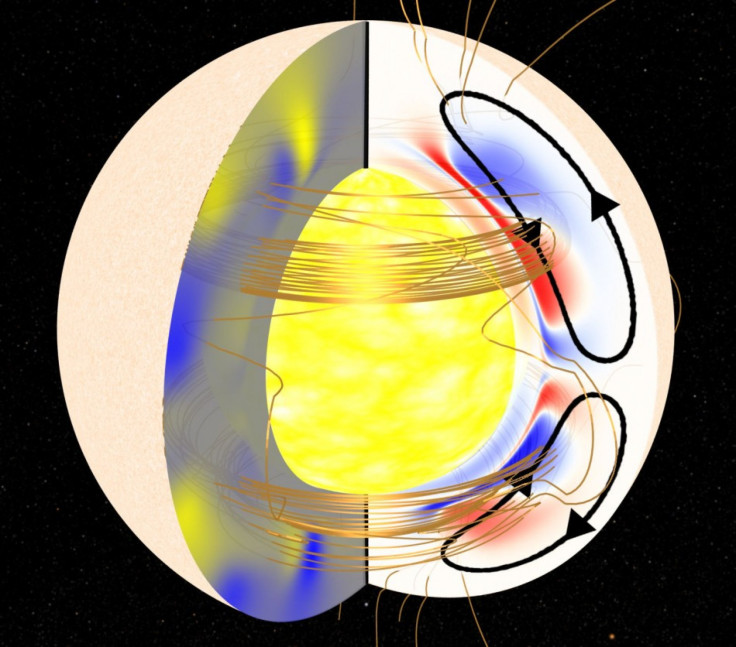Scientists Solve Missing Sunspot Mystery

For two years sunspots disappeared. Now a team of researchers may have found where they went.
The answer has to do with currents of plasma deep inside the Sun. The researchers tested a new model of those currents that has come closer to matching the observations than previous ones. The findings will be published in today's edition of Nature.
Sunspots form when intense magnetism in a small area causes the plasma to cool off. The sunspots appear dark because they are cooler than the surrounding gases, usually about 2,700-4,200 degrees Celsius. The solar surface is about 5,700 degrees. (If one were to isolate a sunspot in space, it would shine brightly).
The sunspots disappeared because plasma in the deep solar interior interfered with their production. When sunspots start to fade they are pulled under the surface layers of the Sun. When they reach depths approaching 300,000 kilometers -- about 40 percent of the way to the center -- the magnetic dynamo powered by the Sun's rotation amplifies the sunspot's own magnetic field, and the sunspot rises to the surface. That starts a new cycle of sunspot formation. The process happens at roughly 11-year intervals and the pattern of circulation resembles a conveyor belt.
In the last solar cycle, something changed: the conveyor belt started moving faster. The remains of the old sunspots didn't stay deep inside the sun long enough to be amplified by the solar dynamo. This cut down the production of new sunspots. The gas circulation sped up again in the latter half of the cycle, in the early 2000s, but there was still a short supply of new sunspots. On top of that the slower motion kept the new sunspots from reaching the surface, which delayed the onset of the next solar cycle.
The 2008 and 2009 period was unusual in that all of the sunspots disappeared, a situation that had not occurred for nearly a century.
Solar activity dropped to the point where the Earth's upper atmosphere actually cooled off enough to shrink. The ultraviolet light from the sun heats the thin gases at the top of the atmosphere, expanding them. When the ultraviolet flux dropped, the gas contracted.
That meant that orbits of satellites, as well as a lot of debris, didn't decay as fast. A lot of space junk was starting to accumulate, and this posed a danger to satellites that were still functioning. Delores Knipp, a visiting scientist from the University of Colorado at Boulder, noted that even small bits of debris can cause problems because they are moving at high speed.
Another effect was cosmic rays. When the sun gets quiet, the barrier between interstellar space and rest of the solar system gets weaker, allowing more charged particles through. This makes space travel more dangerous for astronauts, who get a higher radiation dosage than they ordinarily would despite the lower levels of solar activity.
Lead author Dibyendu Nandi, of the Indian Institute of Science Education and Research in Kolkata, said that while we can see the surface of the Sun easily, modeling the interior is a more difficult thing to do. Does looking at the surface of the ocean tell you about the migrating wildlife underneath? he said.
To contact the reporter responsible for this story call (646) 461 6917 or email j.emspak@ibtimes.com.
© Copyright IBTimes 2024. All rights reserved.











